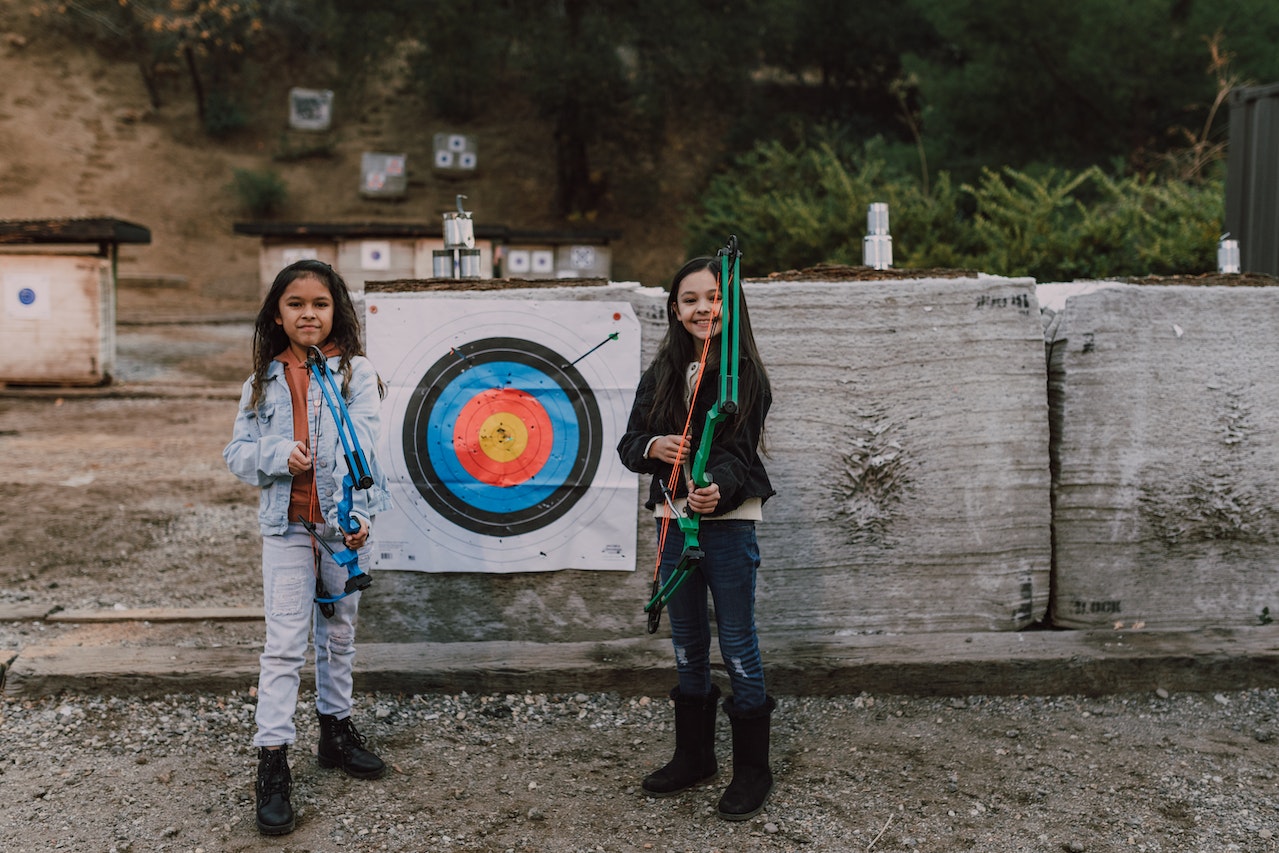Archery, an ancient art of precision and focus, has captured the fascination of many throughout history. As a beginner archer, stepping into this world of skill and elegance can be both thrilling and challenging. To help you hit the bullseye, here are five essential tips and tricks to keep in mind on your archery journey.
Master Your Stance and Posture
A solid foundation is key to any endeavor, and archery is no exception. Start by standing perpendicular to the target with your feet shoulder-width apart. Keep your body relaxed yet firm as if you’re rooted to the ground. Your leading foot should be slightly turned outward while your back foot remains at a 90-degree angle. A slight bend in your knees will help you maintain balance and absorb any recoil. Proper posture not only enhances your accuracy but also prevents strain during extended practice sessions, allowing you to focus more on perfecting your shot.
Grip and Hand Placement
Your grip on the bow can greatly influence your shot’s outcome. Beginners often make the mistake of gripping the bow too tightly, leading to tense and inconsistent shots. Instead, hold the bow with a relaxed and gentle grip, using the meaty part of your hand. Allow your fingers to wrap around the handle comfortably, avoiding any excessive pressure. This light touch provides better control and minimizes torque during the release, resulting in more accurate shots. Remember, finding the right balance between control and relaxation in your grip will significantly improve your shooting consistency and overall performance.
Nocking and Drawing the Arrow
Nocking the arrow – placing it onto the bowstring – is a fundamental step in archery that sets the stage for a successful shot. Ensure the index feather (or vane) is facing away from the bow, and the nock is securely seated on the string. As you draw the bowstring, maintain a fluid and steady motion, keeping in sync with your breathing. The string should rest at the corner of your mouth, and your drawing hand should anchor near your jawbone. Developing a consistent anchor point not only increases accuracy but also facilitates muscle memory over time, making each draw and release a seamless part of your shooting routine.
Focus on Aiming
Aiming is the pivotal moment where technique meets concentration, shaping the outcome of your shot. Many beginners find it helpful to choose a specific aiming point, such as the center of the target’s bullseye or a small mark on it. This aids in aligning your sight with the intended target. To enhance focus, try closing your non-dominant eye while aiming. This technique minimizes visual distractions, allowing you to center your attention on the target. Remember, the goal is to execute a smooth and controlled release rather than a hurried one. Aiming is a skill that refines over time through practice, patience, and a commitment to mastering precision.
Overcoming Target Panic with Visualization
Even the most skilled archers can experience target panic – a sudden anxiety that disrupts your shot process. Visualization is a powerful technique to counter this challenge. Before drawing the bow, take a moment to close your eyes and vividly imagine the entire shot sequence. Envision the perfect shot in your mind’s eye: the smooth draw, the unwavering hold, and the release that propels the arrow straight into the bullseye.
Immerse yourself in the sensory details—the feel of the bow, the sound of the string, the rush of a successful hit. This mental rehearsal, akin to an archery simulator within your mind, helps reduce nervousness and cultivates unwavering confidence. As you execute shots, visualize success with every release, reinforcing a calm and focused mindset. This practice not only aids in overcoming target panic but also paves the way for remarkable improvements in consistency and accuracy.
Bottom Line
Embarking on the journey of archery is a rewarding endeavor that demands patience, discipline, and continuous learning. By mastering your stance, grip, nocking, aiming, and visualization techniques, you’re well on your way to becoming a proficient archer. Remember, practice is key – whether you’re shooting at a target on the range or engaging in a simulator. Embrace the challenges, celebrate your progress, and let the ancient art of archery guide you toward precision and skill.


